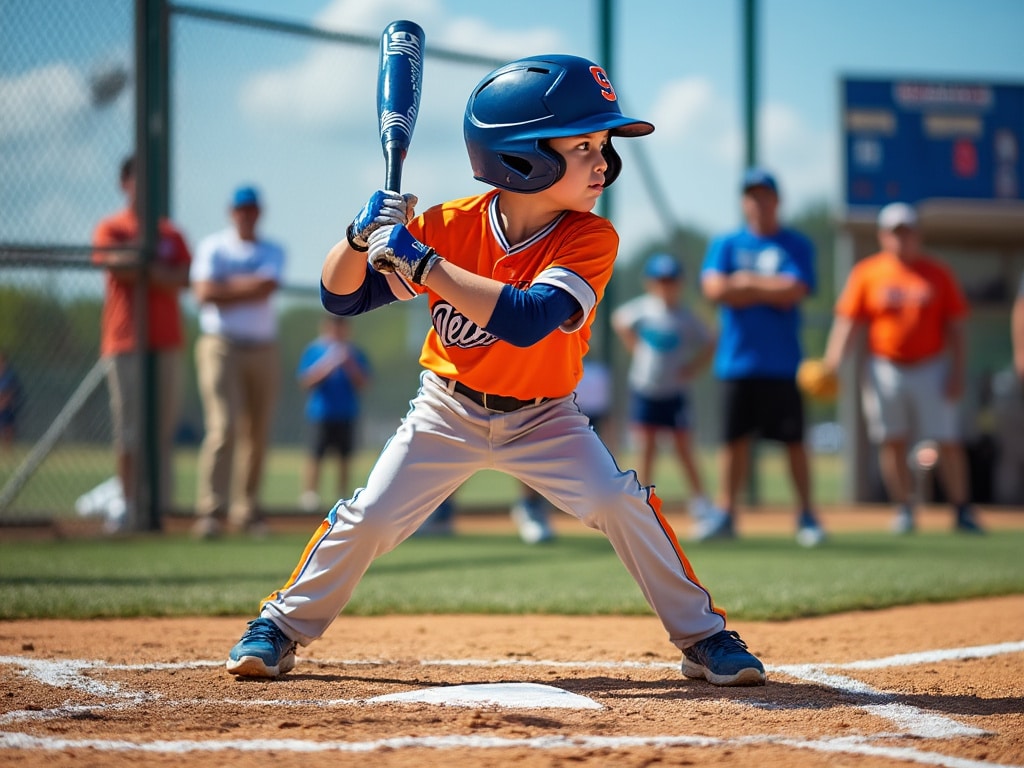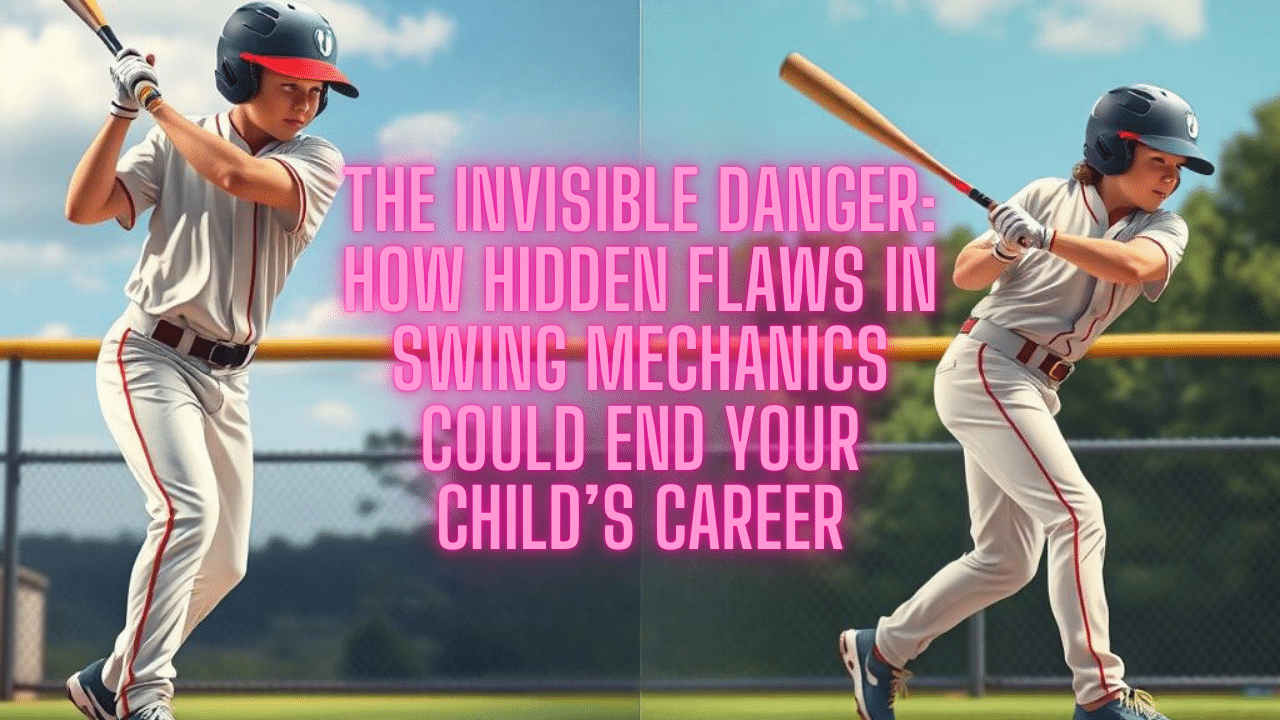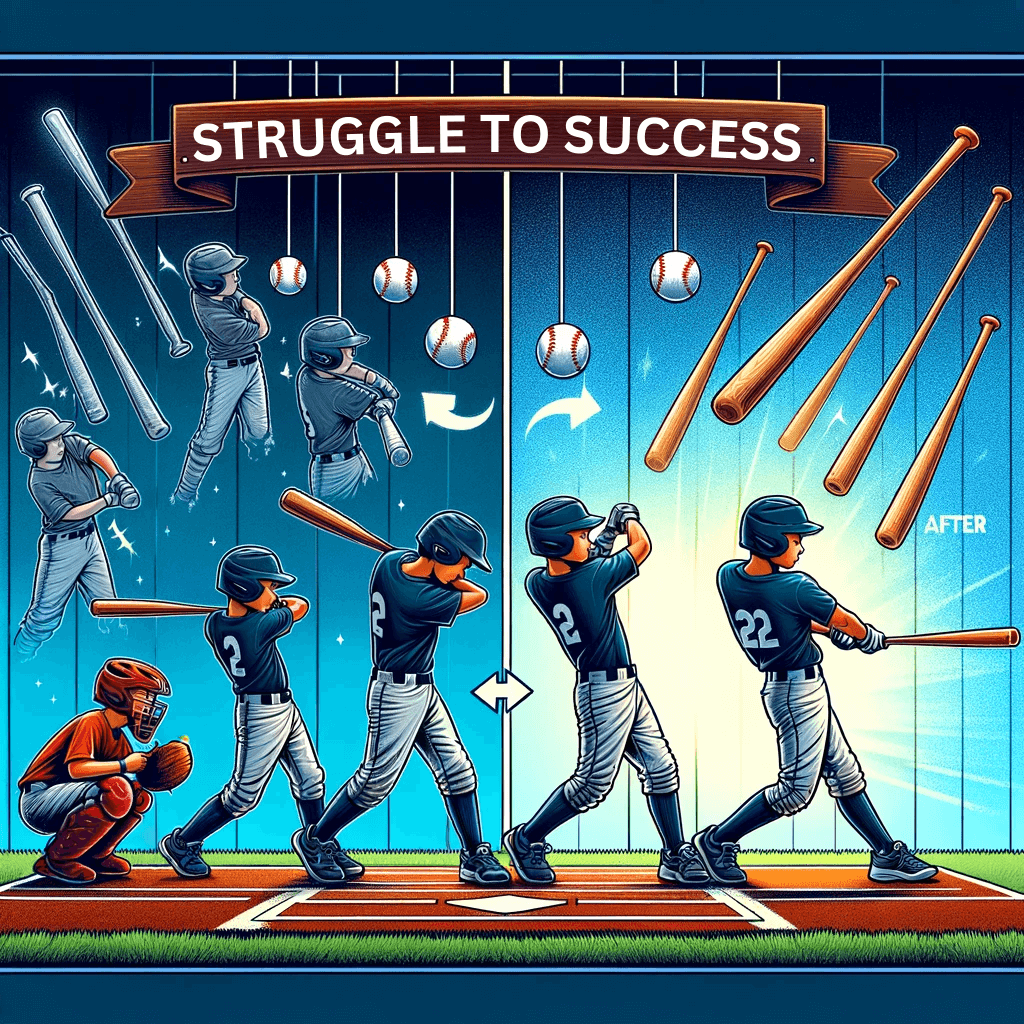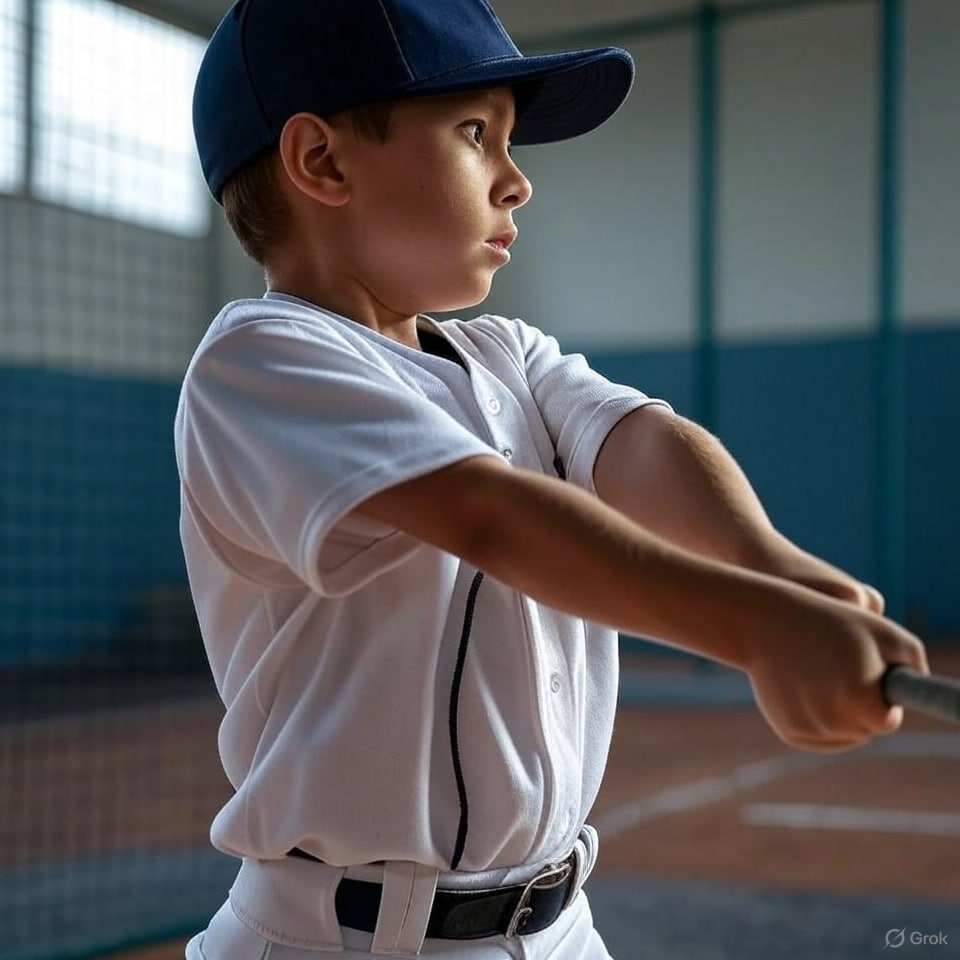
The ‘Less is More’ Approach: Boost Youth Hitting Accuracy by Doing Less with the Head
Did you know that for 9-year-old baseball hitters, the key to developing a strong swing foundation is found in fun, targeted drills? In this article, we’ll explore the science-backed techniques that can immediately improve contact and boost confidence at the plate for young players.
From mastering the proper load position to developing rotational power, the drills we’ll cover address the critical biomechanics of hitting. You’ll learn how to minimize head movement, enhance visual tracking, and optimize swing mechanics for maximum hitting performance. Hitting Performance Lab has uncovered the game-changing secrets to immediate contact improvement for youth hitters.
And by the way, the video below is one of the videos from week-1 of the Swing Shift program.
Key Takeaways
- Discover proven drills to stabilize head movement and boost batting accuracy for young hitters
- Learn the science behind optimal swing mechanics, including launch angle, bat speed, and swing plane
- Understand how pitch location and breaking ball design impact a hitter’s reaction time and contact quality
- Implement video analysis and biomechanics-based techniques to rapidly improve swing performance
- Master the “Catch and Crush” method for generating power and making solid contact
Understanding Head Movement’s Impact on Hitting Success
Keeping your head still during a swing is key to good batting mechanics. The way your head stays stable affects how well you track the ball and hit it. Research shows that hitting the ball with center-center contact hits the ball THE hardest possible.
Biomechanics of Head Stability During Swing
A steady head lets your eyes stay focused on the ball, helping you track and time the pitch. This stability comes from moving your body and bat in the right way. Players who keep their head stable can adjust their swing for different pitches. “Head stable” may not be what you think it is, according to our programming.
Common Head Movement Issues in Youth Players
Young players often have trouble with their head movement, ‘yes’ motions with the head while hitting (chin to chest and eyes to the sky), and rolling the head towards the backside shoulder. This can make hitting the ball hard and consistently hard. Working on these issues with drills can really help a player hit better.
Effect on Visual Tracking and Contact Quality
Having a steady head is key for tracking the ball well. If your head moves too much (post stride landing), it’s hard to keep your eyes on the ball. This can make it tough to recognize the pitch and hit it well. Getting better at keeping your head still can help you hit the ball more accurately and at the right time.
Essential Equipment and Setup for Practice
Having the right baseball training equipment and setup is key to improving your hitting skills. Whether you’re young or experienced, the right tools can greatly enhance your game. Let’s look at the essential items and drills you should add to your training.
For hitters, use batting tees, hitting nets, and over and under loaded bats in your practice. These tools help you work on swing stability, bat path, and power. Setting up different stations for drills allows you to improve various hitting skills efficiently.
It’s also important to practice in a safe and controlled environment. Invest in quality protective gear like helmets, batting gloves, and moms or dads make sure you’re throwing behind a screen. The right equipment and setup are vital for improving your hitting skills.
| Equipment Item | Price Range | Key Features |
|---|---|---|
| Batting Tee | $20 – $100 | Enables focused practice on swing mechanics |
| Hitting Net | $50 – $300 | Allows for safe live batting practice |
| Weighted Bats | $30 – $150 | Develop bat speed and strength |
| Protective Gear | $20 – $100+ | Ensures player safety during practice |
The right baseball training equipment and batting practice setup can change your game. Invest in tools that help you improve your skills and boost your performance.
Immediate Contact Improvement for Youth Hitters
Young hitters face unique challenges as they grow and develop their swing. Differences in how they sense their body and ongoing growth can make their swings unpredictable. But, with the right drills, you can help them hit the ball better right away.
Visual Tracking Exercises
Being able to track the ball is key for consistent hits. Try the bullpen “Stand-In” drill, where hitters learn to recognize pitches without swinging. This drill improves their visual skills and helps them hit better. The “Flamingo Float Drill” also boosts balance and stability, which are vital for hitting well.
Balance Enhancement Drills
Keeping balance during the swing is crucial for young hitters. The “Flamingo Float Drill” requires players to stand on one leg, enhancing their body awareness and control. The hitter then strides carefully and controlled with a soft stride landing. These drills can greatly improve a hitter’s ability to hit the ball solidly.
Timing Development Techniques
Timing is essential for a good swing, and young hitters often find it hard. The “Walking Happy Gilmore” drill helps improve timing and rhythm, leading to better hits. By focusing on their swing intentions and using feedback from their hits, young players can hit more consistently.
Using visual tracking, balance, and timing drills can significantly improve youth hitters’ contact skills. By tackling the specific challenges of this age group, you can help them hit better right away and set them up for success in the long run.
This is a video in the Swing Shift series…
Boost your hitting skills with Swing Shift’s science-backed practice system! This program is packed with features to improve hand path stability, timing, and power. Enjoy engaging drills for consistent progress and fun challenges to keep training exciting. Swing Shift is designed to help players succeed at every level.
The Swing Shift platform lets you focus on key mechanics like bat angle, balance, and hand path control. Dive into step-by-step video lessons that cover power, contact, and rhythm, breaking down the science behind a great swing. With personalized feedback and progress tracking, you can refine your technique and watch your results improve.
Whether you’re a youth athlete, high school player, or elite hitter, Swing Shift is trusted by families and coaches everywhere. Master core skills like bat control, weight transfer, and rotational power with drills designed for real game results. Start your journey to hitting greatness with Swing Shift!
Swing Shift’s practice system offers a wide range of tools to elevate your hitting:
- RNT-based drills for real-time correction
- Engaging challenges for competitive practice
- Personalized training goals and skill progression
- Exclusive videos on timing, power, and consistency
- Hands-on feedback to track and improve your swing mechanics
- Trusted by dedicated parents, players, and coaches
Reach your full potential with Swing Shift’s comprehensive practice system. Elevate your hitting with cutting-edge techniques and proven, science-based training.
Effective Drills for Head Stability and Focus
Looking to elevate your hitting game? Mastering head stability and focus techniques can be transformative. The “Swing Across Your Face Drill” encourages hitters to maintain steady head positioning, which helps keep eyes locked on the ball and reduces head movement. This technique is essential for hitters striving for power and consistency.
Another impactful exercise is the “Head Down & Front Shoulder Close Drill.” It emphasizes correct shoulder positioning and controlled head stability throughout the swing. Adding the “Repetition Focus Drill” to your routine builds confidence and helps reinforce consistency by focusing on the rhythm and controlled pace of each swing.
- The “Swing Across Your Face Drill” keeps your head stable and focuses on tracking the ball, allowing you to stay aligned with the pitch.
- The “Head Down & Front Shoulder Close Drill” emphasizes head stability and shoulder positioning, enhancing swing mechanics and balance.
- Repetition Focus Drill improves timing and rhythm, strengthening the habit of solid, consistent contact.
Implementing these drills in practice will enhance your hitting precision and power. A stable head allows better ball tracking, leading to solid contact and more consistent hits. Elevate your performance and take control at the plate with these focused drills!
| Drill | Focus | Benefits |
|---|---|---|
| Swing Across Your Face Drill | Head stability, ball tracking | Reduces head movement, boosts accuracy |
| Head Down & Front Shoulder Drill | Shoulder alignment, head stability | Enhances swing path, balance |
| Repetition Focus Drill | Rhythm, swing consistency | Builds confidence and accuracy |
Boost your hitting skills with these drills, perfect for improving head stability and batting consistency. Achieve peak performance with a focused, controlled swing!
The Swing Across Your Face Method for Hitting Precision
Consistent, high-quality contact is the goal for any hitter. The “Swing Across Your Face” method trains young players to maintain focus and head stability for a smooth, controlled swing. This approach emphasizes head control, focused vision, and the proper mechanics to help hitters achieve maximum accuracy and consistency.
How to Implement the Swing Across Your Face Method
The “Swing Across Your Face” method involves three main steps:
- Head Tracking Awareness: Keeping the head steady and aligned over the front shoulder to track the ball without losing focus.
- Consistent Shoulder Positioning: Maintaining a closed front shoulder throughout the swing path, promoting stability and improved visual focus.
- Controlled Follow-Through: Ensuring that the follow-through does not cause the head to lift or shift prematurely, for improved accuracy and power.
Common Pitfalls to Avoid
While the “Swing Across Your Face” method is effective, avoid these common mistakes:
- Head Lifting: Looking up too early disrupts focus, leading to inconsistent contact.
- Swing Rushing: Starting the swing too soon or with a fast tempo can harm timing and precision.
- Misaligned Shoulders: Failing to keep shoulders aligned reduces head stability and weakens swing power.
Tracking Progress with Key Metrics
To measure the effectiveness of the Swing Across Your Face method, track these metrics:
| Metric | Explanation |
|---|---|
| Bat Speed | Higher speeds indicate efficient, powerful swings |
| Exit Velocity | Improved exit velocity shows harder, consistent contact |
| Contact Quality | Tracking solid contact rates highlights accuracy improvement |
By mastering the Swing Across Your Face method, young hitters can boost focus, power, and contact consistency, resulting in better accuracy and performance.
Power Generation Through Proper Mechanics
To hit the ball with real power, hitters need to perfect their swing mechanics. Start with the “Frisbee Drill,” using a light frisbee to help with body rotation and energy transfer. This drill helps separate the hips and shoulders, key for explosive power.
Next, try bat speed drills with bats of different weights. This builds strength and speed in your hands, wrists, and forearms. It lets you swing the bat faster. The “Basketball Hitting Drill” also helps, pushing players to hit the ball hard and keep their swing right.
Working on the “Frisbee Drill,” using weighted bats, or doing the “Basketball Hitting Drill” is all about keeping the right body position and movement. By getting the basics right, young hitters can hit the ball hard and consistently.
FAQ
What are the proven drills for immediate contact improvement in youth hitters?
This guide covers the biomechanics of hitting. It talks about how to keep your head still, improve batting accuracy, and feel more confident at the plate. It also looks into the Effective Velocity system and a University of Miami study on baseball swing mechanics.
How does head stability affect successful hitting?
Keeping your head stable is key for hitting well. The guide goes into the biomechanics of a stable head during the swing. It also talks about common head movement issues in young players and how these affect hitting.
What equipment and setup are recommended for effective batting practice?
Using the right equipment and setup is important. The guide suggests using tools like tees, nets, and weighted bats for hitters. Setting up stations for drills is also suggested to keep things safe.
What drills improve visual tracking, balance, and timing for youth hitters?
Drills like the “Stand-In” drill help with recognizing pitches. The “Flamingo Float Drill” improves balance. The “Walking Happy Gilmore” drill works on timing. These drills help hitters make better contact consistently.
What are the advanced head stabilization techniques for hitters?
Techniques like the “Swing Across Your Face” drill and the “Head Down and Front Shoulder Closed Drill” help maintain a stable head. The “Repetition Focus” drill also helps. These methods create torque and power in the swing.
How does the Swing Across your Face method improve contact?
This keeps the hitter from pulling their head, and is most helpful for 12u hitters. This method improves bat speed, exit velocity, and contact consistency.
What drills help develop power through proper mechanics?
Drills like the “Frisbee Drill” promote correct body rotation. Varied weight bat speed drills and the “Basketball Hitting Drill” also help. These drills improve power and contact quality while keeping mechanics right.




















